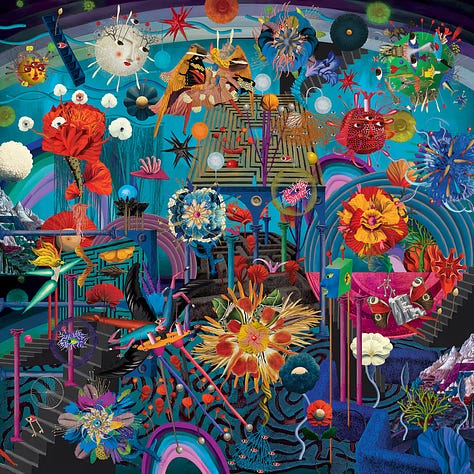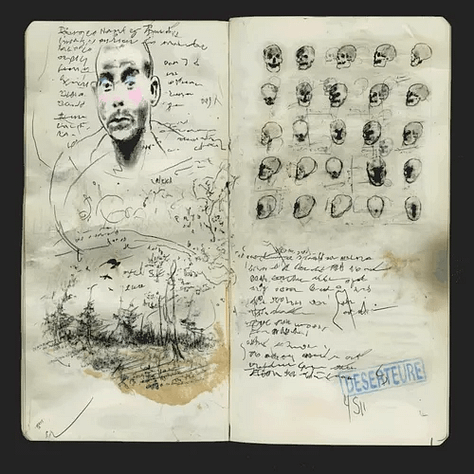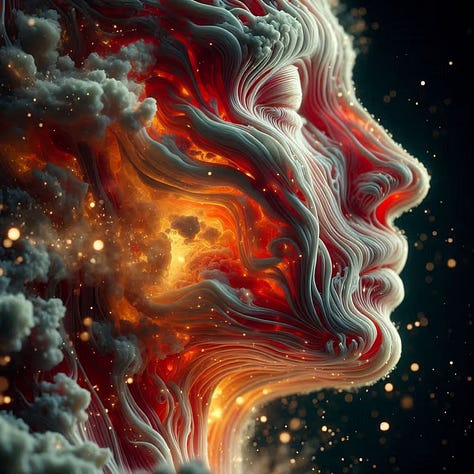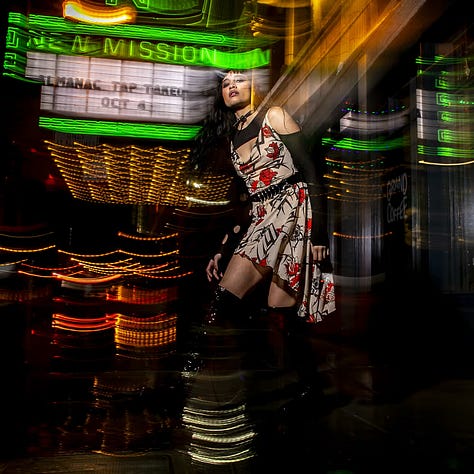Why we invest in Artifacts
Turning creative breakthroughs into investable assets.

Artizen and our community have invested over $2.7 million in cultural Artifacts—unique works of art from projects at the frontier of innovation. That’s not charity. That’s capitalism. But why invest in this new asset class? Why are Artifacts the best way to invest in human creativity?
Because traditional investment vehicles, like stocks or startup equity, can’t price cultural impact. Until they can, capitalism is running at half speed—and trillions in potential wealth remain locked away.
The Free Market’s Blind Spot
Free markets are the most efficient way to allocate capital—but only for things they can price. In the beginning, exchange meant barter: grain for cattle, salt for tools. Trade was limited to what you could carry and count.
The invention of money changed everything. A stamped coin was more than metal—it was an abstraction of value. Suddenly, exchange became simpler, trade routes lengthened, and whole civilizations accelerated.
Next came credit and loans. In Mesopotamia, clay tablets recorded debts of grain and silver, with interest. This let farmers survive bad harvests and merchants fund distant voyages. Finance was no longer just about what you had now, but what you could promise later.
By the classical era, banks and insurance emerged. Greek temples and Roman argentarii safeguarded deposits, extended credit, and pooled risk. Merchants even bought early insurance to protect against shipwrecks—a collective bet that smoothed the dangers of trade.
The Middle Ages added new tools. Bills of exchange allowed merchants to deposit money in one city and withdraw it in another, fueling long-distance trade without hauling coin. And contracts like the commenda in Venice let passive investors fund voyages in exchange for a share of profits—an early form of venture capital that spread risk and expanded commerce.
From there, the instruments grew more powerful. Government bonds in Venice financed wars at sea, letting entire states borrow from their citizens. And in the 1600s, the Dutch East India Company pioneered joint-stock markets, where thousands could own fractional shares in global trade.
Markets advance by learning to see more. Money let us see beyond barter, turning metal into a universal measure of value. Credit, banking, and bonds let us see the future, converting promises and risks into working capital. Stocks let us see scale, pooling money from thousands to fund ventures no single person could imagine alone. Each step widened the market’s vision—and with it, human progress.
But today, markets remain blind to most of the wealth created by artists, scientists, and engineers. Every year they generate trillions in cultural, scientific, and technological impact—most of it given away for free. No one can invest in it. No one can trade it. And so we fund it poorly, stalling the very engine of prosperity.
Trillions left on the table
History is full of breakthroughs that changed civilization but gave creators no way to capture the wealth they produced.
Take Michael Faraday. In the 1830s he discovered electromagnetism—the foundation of the modern age. You couldn’t patent a force of nature, and it was decades before commercialization. He died with little money, even as his discovery powered entire industries worth trillions. Watson and Crick’s discovery of DNA is another case—Nobel prizes, yes, but no equity. Yet the biotech industry now rests on their work.
Or Tim Berners-Lee. In 1990 he invented the World Wide Web. He released it freely, because enclosing it would have killed adoption. The result? Trillions in market value for internet companies, but none of it captured at the source. Linux, and the protocols that make the internet run—TCP/IP, HTTP—follow the same story: indispensable, but uninvestable.
And in culture, the pattern repeats. Buddy Bolden helped invent jazz but never recorded and died in poverty. Sister Rosetta Tharpe shaped the sound of rock and roll, but the money went to later acts like Elvis. DJ Kool Herc created the blueprint for hip-hop, now a multi-billion-dollar industry, but he saw little of the fortune. The pioneers create the movement, but neither they nor investors had any instrument to own its impact.
Again and again, history shows the same pattern: breakthroughs that change the world but escape the market. Why? Because profit was the only yardstick, and profit alone can’t measure the impact of a new force of nature, a new protocol, or a new sound.
Why Not Philanthropy or Government?
Some argue that when markets fail, charities and governments should step in. And they do—on a massive scale—spending roughly $3 trillion a year on research, innovation, and culture worldwide.
But public options fail for predictable reasons. They’re biased, funneling resources to elite institutions and the top 1% of creators. They’re risk-averse, funding safe bets over bold ideas. They’re wasteful, with universities skimming 60% or more for “administration.” And they’re slow—paralyzed by committees, process, and compliance.
A free market failure doesn’t mean the public option will succeed. More often, it fails bigger. What we need is not more bureaucracy, but a better market instrument—one that allows the free market to work its magic.
How Culture Becomes Capital
Markets need an instrument that can price cultural impact as effectively as stocks price profit. Profit is powerful, but it’s too narrow. Science, technology, and art generate wealth even when they don’t generate revenue. Discoveries, standards, and movements push civilization forward but leave both creators and investors empty-handed. Without a way to measure and trade this broader impact, we’re leaving trillions on the table.
Art is the one domain where culture has always been priced. A canvas by Picasso, Da Vinci’s notebooks, Wu-Tang Clan’s Once Upon a Time in Shaolin—these are vessels of cultural value that command markets even centuries later. Art condenses diffuse cultural impact into something scarce and ownable. It is proof that markets can recognize and trade civilization-shaping ideas, even when those ideas never “turned a profit” in the traditional sense.
And unlike stocks or private equity, art is the last great unregulated market. You don’t need to be an accredited investor to buy a painting, a manuscript, or a digital collectible. That makes it the most democratic financial instrument in existence.
The problem is the art market itself. It’s fragmented, illiquid, and inefficient. It can barely fund art, let alone science or technology. What’s needed is not just more art speculation, but a general-purpose art asset—one designed to capture the impact of all forms of creativity.
Artifacts: A Market for Impact






Artifacts are the next step in the history of financial innovation. Just as money let markets see beyond barter, and stocks let them see scale, Artifacts let markets see cultural, scientific, and technological impact. They take the logic of art—condensing diffuse cultural value into something scarce and tradable—and extend it to all forms of creativity.
An Artifact is a unique digital collectible tied to a project. It’s not the project itself, but a work of art that captures its essence—a sketch, a photo, a looped animation, even a fragment of code. Each Artifact marks a milestone and channels the project’s “big idea.” Sold as open editions, every purchase supports the creator directly and unlocks additional match funding and cash prizes. At season’s end, the edition closes, the supply fixes, and everyone—fans, creators, funds, and Artizen—holds a stake.
What makes Artifacts powerful is what they represent. They aren’t equity or IP. You don’t own the project—you own its impact. Like all art, their value comes from beauty, scarcity, and emotional pull. But their true worth rises and falls with the significance of the project the Artifact represents. A math equation that revolutionizes how we produce energy. A guitar riff that spawns a new music genre. A protocol that reshapes the internet.
Most Artifacts will fade, just as most ventures fail. But a few will change the world—and these will be priceless.
The Scale of What’s Possible
Markets work best when they can see what matters. For centuries, they’ve lacked a way to see creativity itself. Artifacts are that missing instrument.
Today, people treat Artifacts as collectibles—beautiful tokens of support. That alone has proven the model: $2.7 million invested and over 30,000 Artifacts collected. But the real leap comes next: turning them into a liquid market. Soon, Artizen will launch an exchange where anyone can buy, sell, and trade Artifacts—easier than stocks, open to anyone in the world.
And when the first breakout hit arrives—when an Artifact tied to a world-changing project surges in value—the frame will flip. Artifacts will no longer be seen as souvenirs, but as a serious asset class: a way to invest directly in the breakthroughs that move civilization forward.
That’s the opportunity: not charity—just capitalism, finally able to fund the full spectrum of human creativity.
Love,
René Pinnell
Founder of Artizen


